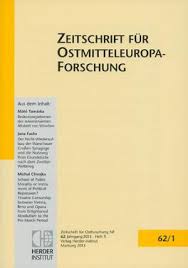Die Entwicklung der ständischen Versammlungen in Livland, Preußen und Polen im Spätmittelalter
The Development of the Estates’ Assemblies in Livonia, Prussia and Poland in the later Middle Ages
Author(s): Roman CzajaSubject(s): Christian Theology and Religion, Political history, 13th to 14th Centuries, 15th Century, 16th Century
Published by: Verlag Herder-Institut
Keywords: Development of the Estates’ Assemblies; Livonia; Prussia; Poland; later Middle Ages;
Summary/Abstract: The political structure of Livonia in the 14th and the 15th centuries was heavily influenced by the Teutonic Order’s ambitions to subjugate episcopal dominions. After successes in the beginning of the 15th century, the Teutonic Order was forced into cooperation with bishops and towns following its defeats by the Polish-Lithuanian Commonwealth. In the Prussian territories, the ruin of the Order’s finances due to the conflicts with the PolishLithuanian Commonwealth set the bourgeoisie and chivalry free to gain more political influence. In Poland the political structure of estates’ representatives was formed by the activities of the political elites after the death of Casimir the Great, and by the rulers’ efforts to secure the dynastic succession. In Livonia, the estates’ political activities arose out of the county councils (Landräte) and Estates’ assemblies (Ständeversammlungen) on the one hand, and out of the joint Livonian assemblies and the Hansetage on the other. In the 1520’s and the 1530’s, the organisation of the joint Livonian assemblies was formally regulated, and this step boosted the evolutionary development of the class assembly into a joint Livonian Landtag. The oldest forms of local class representation of the chivalry in Prussia were the juries, on central level, and the consultations of the major cities with the sovereign prince on how to procede at the Hansetage. At the beginning of the 15th century, this was the nucleus for the class assembly, whose convocation became more and more dependent on their ruler’s will. Corresponding to the increasing political impact of the Prussian general estates, there grew class assemblies on the local level. In Poland there is evidence for class assemblies from the 13th century onwards, with the participation of the whole nobility. Former provincial assemblies became Landtage or sejmiki, with great influence on the composition of the Reichstag or sejm from the 1450’s onwards. On the central level there arose a privy council, the general sejm, competing for competencies with the local sejmiki.
Journal: Zeitschrift für Ostmitteleuropa-Forschung
- Issue Year: 58/2009
- Issue No: 3
- Page Range: 312-328
- Page Count: 17
- Language: German

